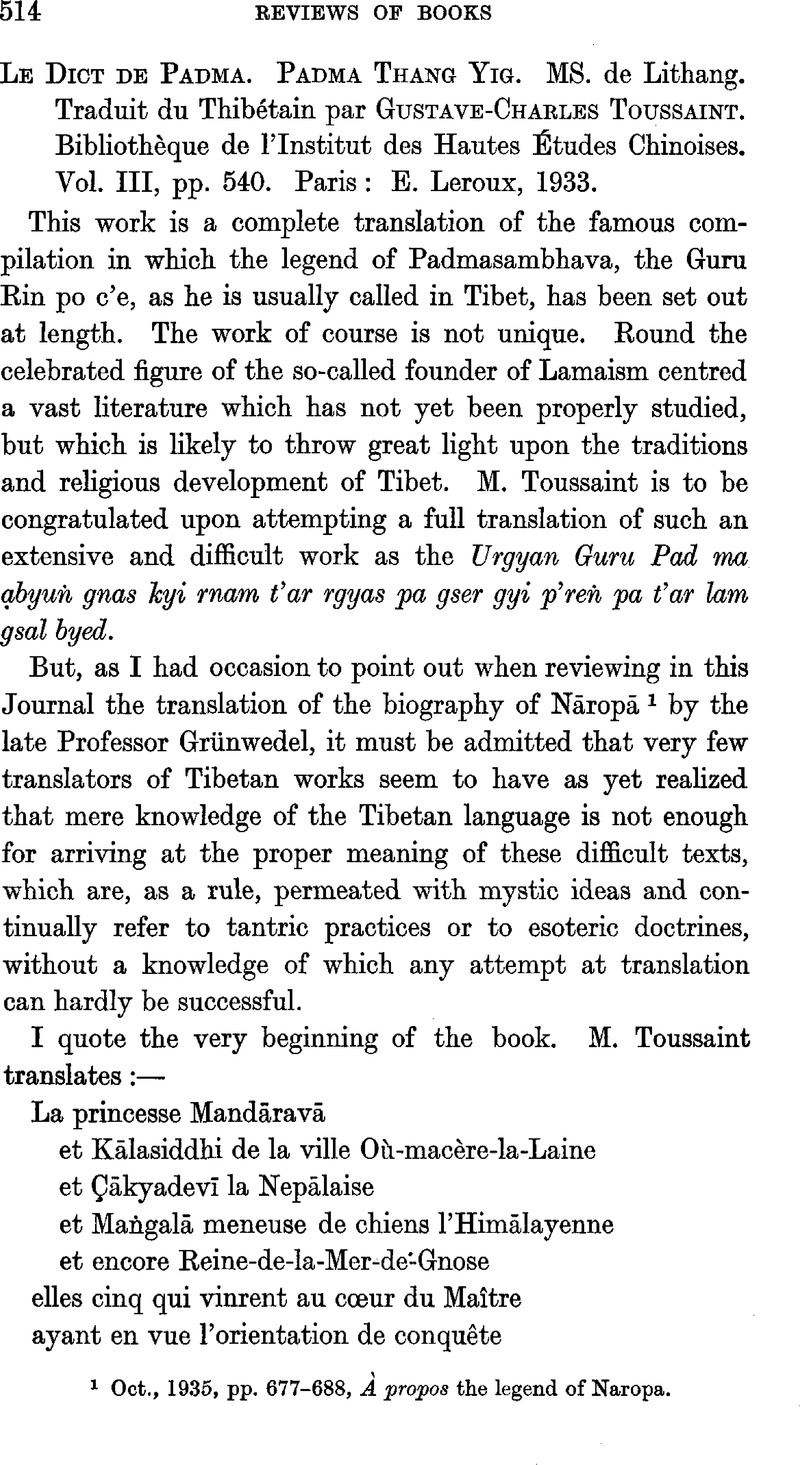No CrossRef data available.
Article contents
Le Dict de Padma. Padma Thang Yig. MS. de Lithang. Traduit du Thibétain par Gustave-Charles Toussaint. Bibliothèque de l'institut des Hautes Études Chinoises. Vol. III, pp. 540. Paris: E. Leroux, 1933.
Published online by Cambridge University Press: 15 March 2011
Abstract

- Type
- Reviews of Books
- Information
- Copyright
- Copyright © The Royal Asiatic Society 1937
References
page 514 note 1 Oct., 1935, pp. 677–688, À propos the legend of Naropa.
page 515 note 1 All xylographs and manuscripts at my disposal read k'ye ådren; K'ye is the name of a disease. Mon is the generical name for the non-Tibetan tribes of the frontier.
page 515 note 2 The five goddesses enter into Padmasambhava, here considered as the supreme reality, in order to be unified with his vajrakāya and to obtain from him the spiritual inspiration of the things which they will reveal. This is the usual process of tantric revelation. I may here refer to the beginning of the Guhyasamāja, where each of the five tathāgatas expounds his vidyā after entering the body of Mahāvajradhara and emanating again from him.
page 515 note 3 Viz. the two yānas.
page 515 note 4 This passage refers to the tantric classification of Mahāyāna literature into three groups: (a) Sūtras of the Prajñāparamitā section; (b) mantra section; (c) guhyamantra section.
page 516 note 1 And owing to this fact they are called gter ma.
page 515 note 2 This description is quite in accordance with that of the Sukhāvatīvyuha, pp. 36 ff.




